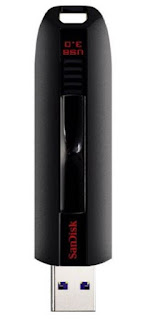Most modern CPUs support VT-x. This allows VBox to run much faster.
You can use VBox+VMUB to boot directly from a USB drive within Windows.
Note that the USB drive will be seen as a SATA or IDE hard disk by the guest OS (not as a USB drive and not as a 'Removable' drive - so E2B Windows Installs from an ISO will not work correctly).
In order to enable VT-x, you need to have a VT-x capable CPU, then enable VT-x in the BIOS settings and make sure that no other software is 'grabbing' that resource (e.g. Hyper-V).
There is a good article on How-to Geek about this.
My VBox was working fine until I upgraded my system to Win10 Pro for £2.84 (see previous blog post) and installed Hyper-V as a Windows 'Feature'. Then I got the dreaded Virtual Box 'VT-x is not available. (VERR_VMX_NO_VMX)' error message when trying to use VMUB.
It seems the only solution was to uninstall Hyper-V, so now it is all working again!
You can use VBox+VMUB to boot directly from a USB drive within Windows.
Note that the USB drive will be seen as a SATA or IDE hard disk by the guest OS (not as a USB drive and not as a 'Removable' drive - so E2B Windows Installs from an ISO will not work correctly).
In order to enable VT-x, you need to have a VT-x capable CPU, then enable VT-x in the BIOS settings and make sure that no other software is 'grabbing' that resource (e.g. Hyper-V).
There is a good article on How-to Geek about this.
My VBox was working fine until I upgraded my system to Win10 Pro for £2.84 (see previous blog post) and installed Hyper-V as a Windows 'Feature'. Then I got the dreaded Virtual Box 'VT-x is not available. (VERR_VMX_NO_VMX)' error message when trying to use VMUB.
It seems the only solution was to uninstall Hyper-V, so now it is all working again!

















